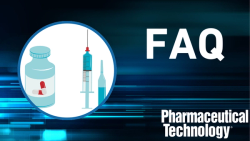
OR WAIT null SECS
- About Us
- Advertise
- Contact Us
- Editorial Info
- Editorial Advisory Board
- Do Not Sell My Personal Information
- Privacy Policy
- Terms and Conditions
© 2025 MJH Life Sciences™ , Pharmaceutical Technology - Pharma News and Development Insights. All rights reserved.
Can new vaccine manufacture method cut time to market by half?
Pharmaceutical Technology Europe
Could insect cells offer a faster way of manufacturing pandemic influenza vaccines compared with traditional egg-based methods? According to researchers at the Vienna Institute of BioTechnology (Austria), their new technique could help a virus-like particle (VLP) vaccine to reach the market within 3 months from the first isolation of a new influenza strain - traditionally produced vaccines take approximately 6 months.
Can new vaccine manufacture method cut time to market by half?
Could insect cells offer a faster way of manufacturing pandemic influenza vaccines compared with traditional egg-based methods? According to researchers at the Vienna Institute of BioTechnology (Austria), their new technique could help a virus-like particle (VLP) vaccine to reach the market within 3 months from the first isolation of a new influenza strain — traditionally produced vaccines take approximately 6 months.
"The technique itself is very simple," Florian Krammer, one of the researchers at the Vienna Institute of BioTechnology, said to Pharmaceutical Technology Europe. "The hemagglutinin gene as well as the matrix protein gene of influenza virus is cloned into a recombinant baculovirus under control of strong baculoviral promotors. This recombinant baculovirus is than used to infect insect cells in a bioreactor. The baculovirus drives the insect cell to express hemagglutinin and matrix protein, hemagglutinin locates at the membrane, matrix protein co-associates and the virus-like particles are released into the supernatant by budding."
Don Farrall/Getty Images
The cell supernatant, which contains the VLPs, is then harvested 72 hours after infection.
As well as accelerating manufacturing time, VLP vaccines also overcome many of the disadvantages associated with traditional egg-based methods, including problems with yield, the necessity of high-growth reassortments and the high risk of contamination.
"Another major advantage of VLPs is the absence of any genetic information; therefore VLPs are completely replication deficient and non-infectious," said Krammer. "This makes their application in the human population very safe, norecombination with wild type virus or complications in immune suppressed individuals as observed with attenuated vaccines can occur."
And the drawbacks?
Unfortunately, the technology is not without its drawbacks. The main challenge, according to Krammer, is the difficulty in separating the influenza VLPs from baculovirus because of their similar densities. " The original method used Sf9 cells, derived from the fall armyworm Spodoptera frugiperda," Krammer added. "With our technology it is possible to reduce baculovirus background 100fold. This was achieved by establishment of the production system in another expression cell line derived from the American cabbage looper Trichoplusia ni. This change went along with increased yield (a publication dealing with these details will be published in Molecular Biotechnology in the coming months.); however, purification remains the main challenge."
Despite the challenges, Krammer believes that VLP vaccines will play a very important role in the future of vaccine manufacturing. "VLP vaccines have an excellent safety profile and are very efficient. There are VLP vaccine candidates for many viruses, including influenza, in the pipeline. Additionally, a lot of approaches for displaying foreign proteins and epitopes on the surface of various VLPs have been developed — and we are currently working on displaying tuberculosis antigens on their surface."
The research has been published in the Biotechnology Journal. In a news release, journal editor Professor Alois Jungbauer also added: "VLPs will be one solution to tackle the biological variability of influenza pandemics. Mutated strains can be quickly engineered, so in this respect the teams' work is an extremely valuable contribution to modern vaccine production."
News bites
Safety programme launched
A consortium has completed pilot runs of a pharmaceutical safety programme that uses electronic tracking and authentication to ensure the safety of drugs in the supply chain. The consortium, SecureTrace, comprises 10 UK companies and is being led by Authentix.
Big Pharma fights cancer
Eli Lilly, Merck Sharp & Dohme and Pfizer have joined together to form the Asian Cancer Research Group, a not-for-profit company aimed at accelerating research and improving treatment for patients affected with the most commonly diagnosed cancers in Asia.
Major growth slowdown
Top pharmaceutical and biotech companies should expect a major slowdown in sales growth between 2008 and 2014. According to a report from Datamonitor, prescription-drug sales will rise only at a compound annual growth rate of 1.2 % up to 2014.
Streamlining orphan reporting
The FDA and the European Medicines Agency are implementing a more streamlined process to help regulators better identify and share information regarding orphan drug and biologic products. A primary part of the new process includes US and EU regulatory acceptance of a single annual report from sponsors that manufacture these drug products.



